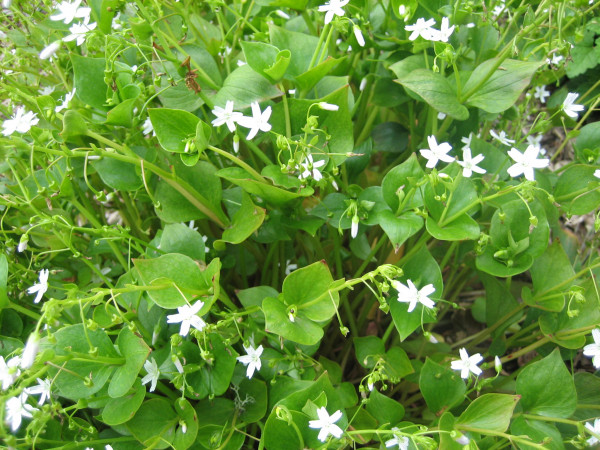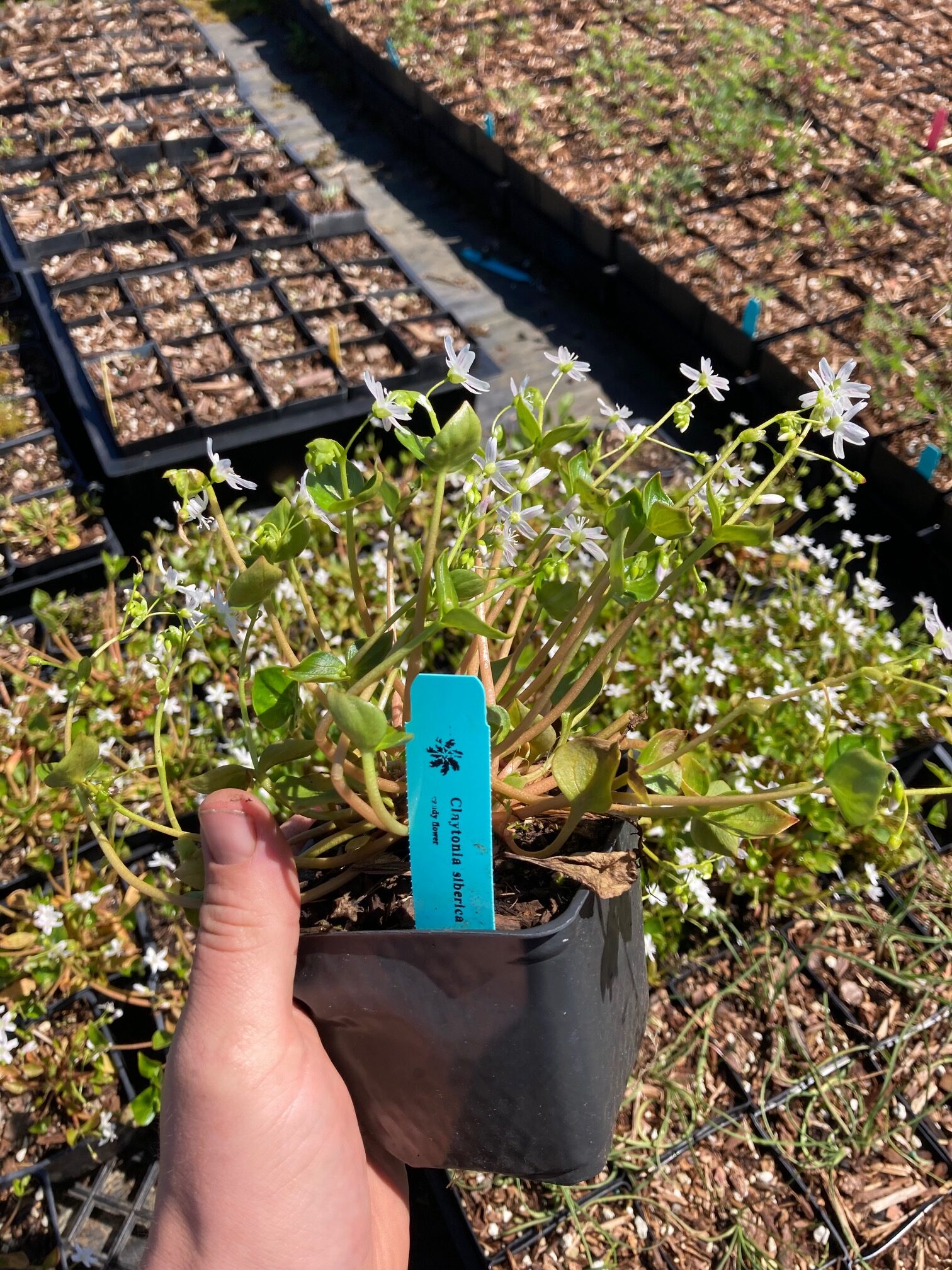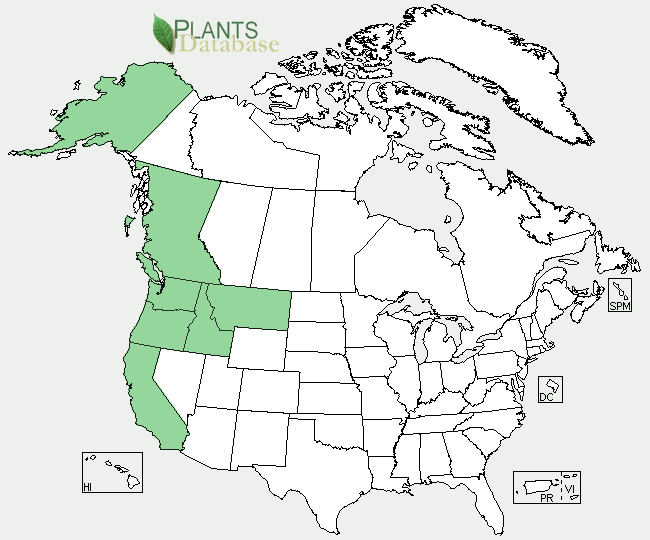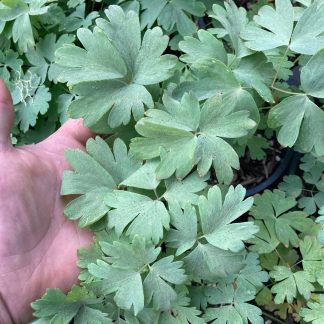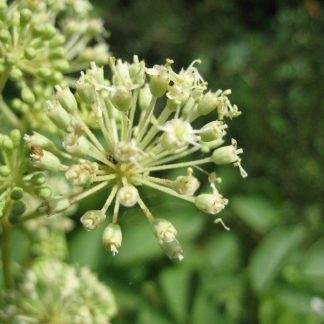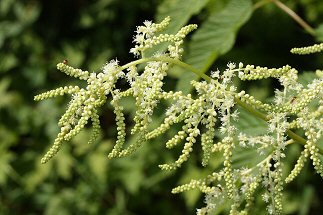Claytonia sibirica
candy flower, spring beauty
Habit: Claytonia sibirica is a short-lived perennial arising from a slender taproot. It forms sprawling carpets of succulent stems, long-stalked basal leaves and an abundance of delightful tiny blossoms. Its basal leaves are lance-shaped, about 2 inches long and sometimes grow small bulbs at their base. Flowering stalks can grow up to 16 inches tall and bear one pair of ovate or lance-shaped, oppositely arranged leaves. White or pink flowers born on short stalks are arranged in a long raceme. Each blossom is about a half-inch long and bears 2 sepals along with 5 notched, conspicuously veined petals. Flowers bloom from early spring to early fall and are followed by capsules containing 1 to 3 shiny black seeds.
Ecology: common in moist, often shady woods and meadows, as well as in upper beaches and streambanks, at low to medium elevations. This species is native from the Western United States, occurring from Alaska to Southern California, and east to Montana.
Growing conditions: favors partial light to full shade, and moist soils. The prolific flowers make a striking addition to the garden during its long blooming season. Candy flower is sometimes considered weedy, so appropriate management is required to avoid unwanted spreading.
This species has been used by Native Americans for its medicinal purposes. The Tlingit applied it as a treatment for syphilis and the Songish, as a remedy for headaches. Although it has not been reported that Native Americans used this species as a food source, candy flower is an edible plant. Contemporaneously, it has been consumed as a salad or garnish. Claytonia sibirica is also known as Montia sibirica.
Specs
Herbaceous Perennial
4-16 in (10-40cm)
1-3 feet (0.3 - 0.9 m)
4a to 9b

